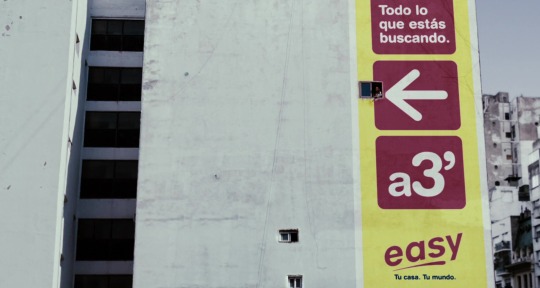#Gustavo López
Explore tagged Tumblr posts
Text
El Centro Sampay analiza tarifas de telefonía internet TV y los avances contra la libertad de expresión
El dirigente y especialista, Gustavo López, , disertará invitado por el Centro de Estudios de la Realidad Social y Política Arturo Sampay. López es exvicepresidente del Ente nacional de Comunicaciones Enacom. Será una charla organizada por la entidad; el Ateneo Presidente Raúl Alfonsín; y el partido FORJA de Vicente López. Será el viernes 23 en la Cámara en la Empresaria de Vicente López, av…
0 notes
Text

Flor Arriola by © Gus&Lo
1 note
·
View note
Text
Indefensos ante la mafia macrista
Los macristas Milman y Caputo se revelaron involucrados en el intento de asesinato a Cristina pero el fiscal y la jueza los encubren. Magnetto amenaza funcionarios que lo quieren hacer competir, ¿competir? ¿en qué cabeza cabe? ¡Basta Magnetto! Para Cristina, ni justicia Imagen: El Extremo Sur.

View On WordPress
#Capuchetti#Caputo#Clarín#Cristina#ENACOM#Gustavo López#intento de asesinato#Magnetto#Milman#Rívolo#Sabag Montiel#Telecentro
0 notes
Text




Sidewalls (2011)
19 notes
·
View notes
Text


Medianeras (2011), dir. Gustavo Taretto
#medianeras#sidewalls#gustavo taretto#pilar lópez de ayala#argentinian cinema#*#film stills#not immune to hot women smoking#dailyworldcinema
67 notes
·
View notes
Text









medianeras (2011) dir. gustavo taretto
4 notes
·
View notes
Text
Un suceso pocas veces contado
Un suceso pocas veces contado #aperturaintelectual #palabrasbajollave @tmoralesgarcia1 Thelma Morales García
#AperturaIntelectual#palabrasbajollaveAI#19 de octubre de 1811#Alejandro Ostoa#Arte#Aurelio J. Venegas#Carlos María de Bustamante#cerro del Calvario de Toluca#Cultura#Gustavo G. Velázquez y los recientes de Alexander Naime#Holocausto Toluqueño#Inocente Peñaloza#Isauro Manuel Garrido#Javier Romero Quiroz#Leopoldo Flores#Lucas Alam��n#Miguel Salinas#Norberto López#Pedro Antonio Martínez#Periplo Plástico#Personajes#Pilar Iracheta#Plaza de los Mártires en Toluca#Poesía#Raymundo César Martínez#Thelma Morales García#Vicente Riva Palacio
2 notes
·
View notes
Text
Todo sobre 'El Eternauta', la historieta que llegará como serie a Netflix
Desde hace dos años uno de los estrenos más esperados es la serie argentina en Netflix 'El Eternauta', basada en la reconocida historieta, por eso te contamos todo lo que debes saber antes del estreno de esta serie.
Desde hace cuatro años uno de los estrenos más esperados es la serie argentina en Netflix ‘El Eternauta’, basada en la reconocida historieta, por eso te contamos todo lo que debes saber antes del estreno de esta serie. Escrita por Héctor Germán Oesterheld e ilustrada por Francisco Solano López, ‘El Eternauta’ es una de las historietas de ciencia ficción más icónicas de Argentina y ha ganado…
#Adolfo Aristarain#Alfredo Scutti#Alienígenas#Andrea Pietra#Argentinta#Ariel Staltari#Bruno Stagnaro#Carla Peterson#Cascarudos#César Troncoso#Ciencia Ficción#Claudio Martínez Bel#Conquista alienígena#Dictadura Militar#Dictadura Militar Argentina#Doctor Favalli#Editorial Frontera#El Eternauta#Elsa Oesterheld#Fernando Solanas#Francisco Solano López#Gustavo Mosquera#Héctor Germán Oesterheld#Historieta#Hora Cero#Hora Cero Semanal#Juan Salvo#Marcelo Subiotto#Mora Fisz#Netflix
0 notes
Text
Exposición 70/80 Arte Cubano, Colectiva
#2024#Agustín Bejarano#Aldo Menéndez#Aldo Soler#Alfredo Sosabravo#Andy Rivero#Antonia Eiriz#Ángel Ramírez#Carlos Alfonso#Carlos Rodríguez Cárdenas#Ciro Quintana#Cosme Proenza#Eduardo Muñoz Bachs#Eduardo Roca Salazar Choco#Flavio Garciandía#Gustavo Acosta#Gustavo Pérez Monzón#Jesús Lara Sotelo#Jorge Braulio Rodríguez#José Manuel Fors#José Villa Soberón#Leandro Soto#Manuel López Oliva#Mariano Rodríguez#Marta María Pérez Bravo#Muestra Colectiva#Nelson Villalobos#Osneldo García#Pedro Vizcaíno#Raúl Martínez
0 notes
Text
Ociel Alí López* La oposición en Colombia sufrió otra decepción el viernes, tras conocerse la finalización inesperada de la huelga de camioneros que paralizó el país desde el lunes pasado. La misma supuso una crispación general durante toda la semana, debido a los bloqueos de importantes arterias viales que impedían todo tipo de paso vehicular y que comenzaban a hacer estragos en los sectores de alimentos, sanidad y combustible. Continue reading Petro en un campo minado: del paro de camioneros a la diatriba con el CNE
0 notes
Text
Acusaciones de violencia laboral en Radio Muni: El Municipio de San Salvador de Jujuy y el SEOM en conflicto
Acusaciones de violencia laboral en Radio Muni: El Municipio de San Salvador de Jujuy y el SEOM en conflicto El #SEOM denuncia #violencialaboral en #RadioMuni; el municipio de #SanSalvadordeJujuy defiende a la directora #ValleFermi y critica al sindicato.
El SEOM denuncia violencia laboral en Radio Muni; el municipio de San Salvador de Jujuy defiende a la directora Valle Fermi y critica al sindicato. En la Municipalidad de San Salvador de Jujuy, un conflicto laboral ha captado la atención de la comunidad. Las acusaciones de violencia laboral en Radio Muni, dirigidas contra la directora Valle Fermi, han generado un enfrentamiento entre el…
#agravios#ambiente de trabajo#condiciones laborales#denuncias#Gustavo Muro#insultos#intendente Jorge#Justicia#Municipio#Radio Muni#respeto#San Salvador de Jujuy#Sebastián López#Secretario General#SEOM#Sindicato de Empleados y Obreros Municipales#trabajadores#transparencia#Valle Fermi#violencia laboral
0 notes
Text
Acusaciones de violencia laboral en Radio Muni: El Municipio de San Salvador de Jujuy y el SEOM en conflicto
Acusaciones de violencia laboral en Radio Muni: El Municipio de San Salvador de Jujuy y el SEOM en conflicto El #SEOM denuncia #violencialaboral en #RadioMuni; el municipio de #SanSalvadordeJujuy defiende a la directora #ValleFermi y critica al sindicato.
El SEOM denuncia violencia laboral en Radio Muni; el municipio de San Salvador de Jujuy defiende a la directora Valle Fermi y critica al sindicato. En la Municipalidad de San Salvador de Jujuy, un conflicto laboral ha captado la atención de la comunidad. Las acusaciones de violencia laboral en Radio Muni, dirigidas contra la directora Valle Fermi, han generado un enfrentamiento entre el…
#agravios#ambiente de trabajo#condiciones laborales#denuncias#Gustavo Muro#insultos#intendente Jorge#Justicia#Municipio#Radio Muni#respeto#San Salvador de Jujuy#Sebastián López#Secretario General#SEOM#Sindicato de Empleados y Obreros Municipales#trabajadores#transparencia#Valle Fermi#violencia laboral
0 notes
Text
¡Basta Magnetto!
Impune, el mayor mafioso de la Argentina, amenaza funcionarios que habilitan la competencia. Telecentro disputará a Clarín y a los criminales de Magnetto no les gustó. Amenazan con sus jueces. Pueden secuestrar o confiscar. El vicepresidente de ENACOM @gustavoflopez denunció que Telecom lo amenazó mediante Carta Documento: "La carta es directamente una amenaza porque la enviaron para que no…

View On WordPress
0 notes
Text
"Colombia’s congress has voted to change a law that allowed minors to get married with parental consent.
The proposal would make the minimum age for marriage 18, and seeks to protect the rights and development opportunities for minors. It still must be signed into law by President Gustavo Petro.
Currently, the country’s civil code allows person as young as 14 years old to get married with parental consent.
The initial proposal to reform the law – presented in 2023 – used the slogan “they’re girls, not wives” and aimed to prevent young girls from being forced to marry, to be subject to different forms of violence and to miss out on education and development opportunities.
“Minors are not sexual objects, they’re girls,” congresswoman Clara López Obregón said in a statement after the proposal was greenlit.
Child marriage remains a widespread practice worldwide and affects around 12 million girls per year, according to the UN’s agency for children, UNICEF.
But there’s been a global drop in child marriages over the past few years, according to the agency’s statistics. “Ten years ago, one in four young women aged 20 to 24 was married as a child. Today that number has fallen to one in five,” UNICEF said.
In Latin America, poverty is the main factor leading to minors getting married, according to UNICEF."
#united states do this challenge#because as a reminder the united states ALSO has child marriage in a great many states#for all that child marriage is typically thought of as only a problem in developing (conveniently nonwhite) countries#although there has been a really big drop in child marriage in the united states in the past two decades#much bigger than the global drop#so there's that at least#feminism#child marriage#children's rights#children#colombia#south america#cw child abuse#cw csa#tagging those to be safe
2K notes
·
View notes
Text



Sidewalls (2011)
11 notes
·
View notes
Text
López Obrador confirma que Petro asistirá a la reunión presidencial sobre el tema migratorio
El mandatario mexicano indicó que el encuentro busca reunir a los líderes de los países de América Latina y el Caribe. El presidente de México, Andrés Manuel López Obrador, confirmó este viernes que su homólogo colombiano, Gustavo Petro, asistirá al encuentro: ‘Por una vecindad fraterna y con bienestar’, que organizará su país para buscar soluciones entre los distintos líderes de los países de…

View On WordPress
0 notes